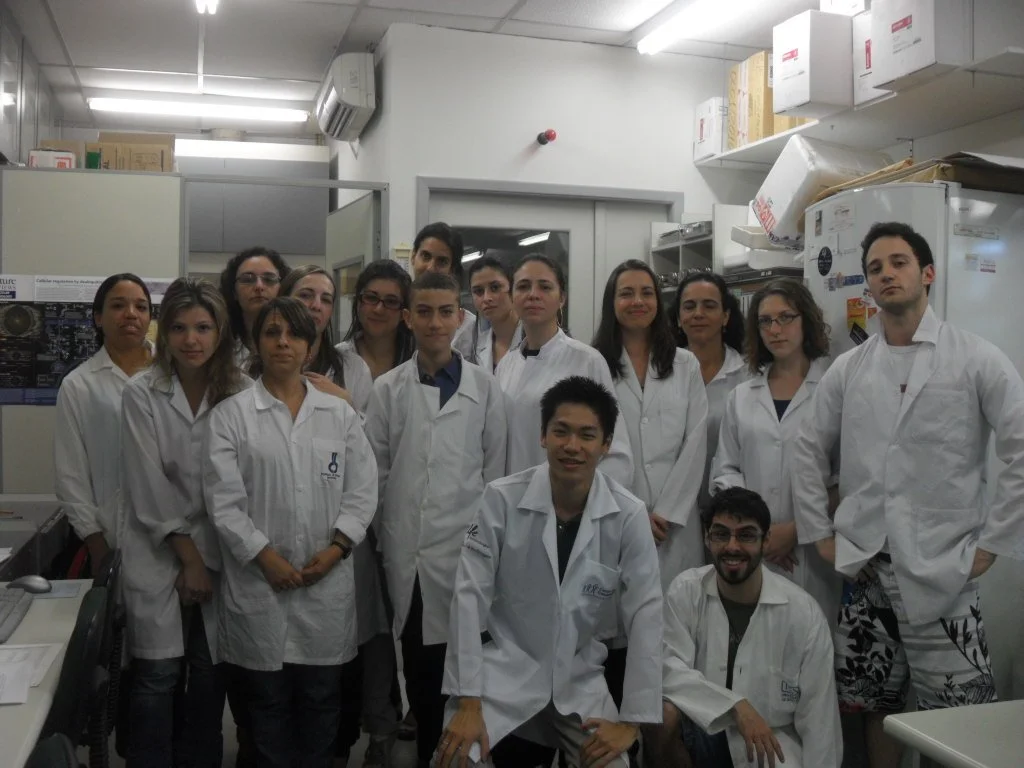
PROJECTS
-
Anti-tumor therapies are largely based on genotoxic agents capable of causing DNA damage. However, cells present systems which repair or tolerate such damage, and DNA Translesion Synthesis is one of the most important tolerance processes. The main polymerases involved in this system are the DNA polymerases of the Y family. Several tumors (e.g., lung, ovarian and glioma cancers) have been reported to be resistant to first-choice chemotherapeutic agents, and this resistance was associated with the upregulation of the polymerases from this family, (namely η, ι, κ and Rev1), among other proteins. Previous data obtained by our group showed that the impairment of polymerase eta (pol η) activity is capable of sensitizing tumor cells to cisplatin. Hence, despite the evidence available so far on the therapeutic potential of this protein, the absence of selective pharmacological inhibitors is one of the main difficulties in translating the accumulated knowledge about this target into clinical trials. Thus, this work aimed to identify chemical fragments capable of interacting with the catalytic site of pol η, through the fragment-based drug discovery approach. We identified 10 fragments that inhibited enzyme activity by at least 50%. The presence of chemical functions common to these molecules opens perspectives for the synthesis of selective inhibitors that can be used as chemotherapy adjuvants, increasing the response of patients to treatment, and overcoming tumor resistance.
-
Cervical cancer is one of the main types of cancer among women, and is responsible for about 4% of the cancer-related deaths worldwide. Since 1970 there has been increasing evidence of the association between this cancer and the infection by the Human Papillomavirus (HPV), which is responsible for 99,7% of the tumors. Of the types of HPV, the 16 and 18 are among the ones considered as high oncogenic risk, a characteristic they have due to the viral genes E6 and E7 which mediate de degradation of the cellular proteins p53 and pRb, respectively. The treatment usually involves Cisplatin, a DNA alkylating chemotherapeutic agent with high toxicity. The ATR kinase (ataxia-telangiectasia mutated (ATM) e RAD3-related kinase) is an essential enzyme for the replicative viability of human cells and its activation is specially related to the presence of single-stranded DNA, formed during the repair and replication processes of the damaged DNA. It also phosphorylates a series of substrates, among which the CHK1 protein, responsible for triggering a cascade effect which prevents cell cycle progression to mitosis. The treatment with the specific ATR inhibitor Ve-821 has been demonstrated capable of sensitizing cancer cells to ionizing radiation and different chemotherapies. This property is especially interesting to reduce the toxicity of the current treatments and overcome tumor resistance. Thus, this project intends to evaluate the synergistic effect between cellular transformation by HPV and the inhibition of the ATR kinase, combined with the cisplatin treatment, expecting to better understand the mechanisms of this effect and to obtain perspectives for the therapeutic protocol of these tumors.
-
Cervical cancer is one of the main types of cancer in women, being responsible for about 4% of the cancer-related deaths worldwide. Most of these cases (99.7%) are associated with infection by the Human Papillomavirus (HPV), also associated to mouth, throat, anus and penile cancers. The HPV oncogenic potential is due to the E6 and E7 genes, which mediate degradation of the tumor suppressor proteins p53 and pRb, respectively. The most common treatment involves cisplatin, a chemotherapeutic agent that forms bulky lesions in the DNA double-strand. The Translesion Synthesis (TLS) DNA-Polymerases η, ι, κ and Rev1 are involved in the bypass of such lesions conferring tolerance to cells and have been shown to contribute to tumor resistance and shorten the time to tumor relapse. Thus, our goal is to search for small-molecule inhibitors of these polymerases that can act as adjuvant to chemotherapeutic protocols. This work presents the initial results of expression and purification of the core domains of Pols η, ι and κ and the High-Throughput Screening of a library of chemical compounds. Considering that most tumors (including cervical tumors) present defects in p53, affecting another important pathway related to chemotherapy-induced damage tolerance may be a viable way towards potentiating the therapeutic protocol of these tumors and surpassing tumor resistance.
-
The xeroderma pigmentosum (XP) syndrome is a rare autosomal recessive genetic disorder characterized by high sensitivity to sunlight, premature aging, and, in some cases, neurodegeneration. XP patients are deficient in some DNA repair mechanisms, including Nucleotide Excision Repair (NER). So far, eight groups have been identified, where each group corresponds to alterations in a different gene involved in the repair process, with seven being the classic groups (XP-A to XP-G) deficient in NER. In addition to these groups, there is the variant group (XPV), which has normal NER but presents a mutation in the gene coding for the protein called Polymerase eta (Pol η), which participates in DNA translesion synthesis. In both cases, patients are subject to lesions caused by UV, culminating in genomic instability and a very high incidence of skin cancer. XPV patients have a less aggressive clinical picture and no neurological symptoms. Their cells are less sensitive to UV light when compared to cells from patients in the other XP groups. Thus, this work aims to evaluate the responses of fibroblast cell cultures from XPV patients to UVB light after transformation by HPV genes. The HPV E6 and E7 proteins used in the transformation of primary fibroblasts from XPV patients act respectively on p53 and pRb proteins, important regulators of the cell cycle. The increased sensitivity to UVB light observed through the XTT assay (cell viability) and flow cytometry may be the result of an increase in the apoptosis process of these cells, due to the impairment of the two cell cycle regulatory proteins. Furthermore, this increase may mean that a combination of these two or three genetic alterations can lead to a situation of synthetic lethality in relation to chemotherapeutic agents used to treat cervical tumors, essentially caused by HPV.
-
In this project, we propose to explore the modular characteristic of spider silk proteins, through synthetic biology techniques, by combining and directing its properties to the desired application. The aim of this project is to generate a modular bionanomaterial able to immobilize proteins. This bionanomaterial will be composed of modular recombinant proteins from spider silk, which will be the immobilization support to other proteins, in this project an antimicrobial protein (enzybiotic). By combining these proteins and their properties, the primary focus will be the use of this technology for the development of artificial skin for burn victims.




